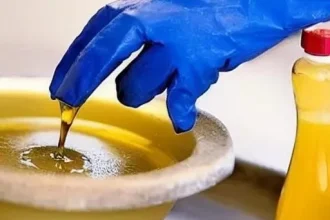Every gardener dreams of a vibrant‚ flourishing flower bed‚ a kaleidoscope of color that bursts forth with life‚ defying weeds and drought. Yet‚ the reality often involves relentless weeding‚ parched soil‚ and blooms that disappointingly fade too soon. This persistent struggle can be disheartening‚ transforming a joyous pursuit into a taxing chore. But what if there was a remarkably simple‚ incredibly effective solution‚ one that not only beautifies your garden but also nurtures its very essence?
The answer‚ surprisingly‚ lies in the humble wood chip. Far from being a mere decorative afterthought‚ these unsung heroes of the garden are revolutionizing how we cultivate spectacular floral displays. By integrating insights from cutting-edge horticultural science and time-tested gardening wisdom‚ discerning gardeners are discovering that the right wood chips can dramatically enhance soil health‚ retain vital moisture‚ and suppress stubborn weeds‚ paving the way for a truly breathtaking botanical sanctuary. As we gaze towards a future of sustainable and effortless gardening‚ understanding the nuanced power of wood chips becomes not just advantageous‚ but essential;
Choosing the Right Wood Chips for Your Floral Oasis
Understanding the diverse options available is key to unlocking your garden’s full potential; Here’s a quick guide to common wood chip and mulch types for flower gardens:
| Feature | Arborist Wood Chips | Shredded Bark (Pine/Cedar) | Dyed Mulch (Black/Brown) | Straw/Leaf Mold Alternatives |
|---|---|---|---|---|
| Description | Mix of wood‚ leaves‚ small branches from tree trimming. | Processed bark‚ often uniform in size and texture. | Wood chips colored with non-toxic dyes for aesthetics. | Organic materials like aged leaves or straw. |
| Primary Benefit | Excellent soil enrichment‚ moisture retention‚ weed suppression. | Aesthetically pleasing‚ good moisture retention‚ pest deterrent (cedar). | High visual appeal‚ consistent color‚ weed suppression. | Improves soil structure‚ adds nutrients‚ cost-effective. |
| Flower Garden Suitability | Highly recommended for perennial beds and established plantings. | Excellent for formal and informal flower beds‚ especially acid-loving plants. | Popular for vibrant contrast‚ but consider dye impact on soil. | Best for annual beds or as a base layer for other mulches. |
| Considerations | May vary in appearance; “green” chips can temporarily deplete nitrogen. | Breaks down slower than arborist chips; some types can be costly. | Dyes may fade over time; check for non-toxic‚ safe formulations. | Less decorative; may attract pests if not properly aged/applied. |
| Official Reference | Oregon State University Extension | |||
The magic of wood chips stems from their multifaceted benefits‚ acting as a natural blanket for your garden’s precious soil. Firstly‚ their superior ability to conserve moisture is unparalleled. A layer of wood chips significantly reduces evaporation‚ meaning your plants require less frequent watering‚ a monumental advantage during dry spells or for the environmentally conscious gardener. This moisture retention creates a stable‚ humid microclimate beneath the surface‚ fostering robust root development and mitigating the stress of fluctuating temperatures.
Beyond hydration‚ wood chips are formidable weed suppressors. By blocking sunlight from reaching weed seeds‚ they effectively prevent germination and growth‚ drastically cutting down on one of gardening’s most arduous tasks. Imagine reclaiming hours spent pulling weeds‚ redirecting that energy instead to enjoying your beautiful blooms. Furthermore‚ as these organic materials slowly decompose‚ they enrich the soil with vital nutrients and organic matter‚ enhancing its structure‚ improving aeration‚ and providing a banquet for beneficial microorganisms. This natural‚ slow-release fertilization fosters a thriving ecosystem where flowers can truly flourish.
Choosing the right type of wood chip is paramount for optimal results. Arborist wood chips‚ often a blend of wood‚ leaves‚ and small branches‚ are highly acclaimed by horticultural experts like Abi Griffith for their comprehensive benefits. “Wood chips are really great for mulching in perennial beds‚” she notes‚ emphasizing their natural diversity which contributes to a balanced nutrient profile as they break down. For those seeking a more uniform aesthetic‚ shredded bark mulches‚ such as pine or cedar‚ offer a clean look and excellent moisture retention. Pine bark is particularly beneficial for acid-loving plants like azaleas and rhododendrons‚ subtly adjusting soil pH over time. Cedar‚ with its aromatic qualities‚ also provides a natural deterrent against certain garden pests‚ adding another layer of protection.
While decorative dyed mulches are visually striking‚ their long-term impact on soil health warrants careful consideration. While many are made with non-toxic dyes‚ the natural‚ undyed varieties generally offer superior benefits for soil biology. For initial garden bed preparation‚ especially in new areas‚ incorporating a layer of cardboard beneath the wood chips‚ as some experienced gardeners advocate‚ can provide an extra powerful barrier against persistent weeds. This ingenious layering technique further suppresses unwanted growth while allowing the wood chips to gradually break down and integrate into the soil‚ creating a supremely fertile foundation.
Applying wood chips correctly is crucial for maximizing their potential. A consistent layer of two to four inches is generally recommended for flower beds. Avoid piling chips directly against plant stems‚ as this can trap moisture and encourage disease. Instead‚ leave a small‚ breathable collar around the base of each plant; While some gardeners initially worry about nitrogen immobilization – where decomposing wood temporarily draws nitrogen from the soil – this effect is largely superficial when chips are used as a surface mulch and not tilled deeply into the soil. Paul‚ a proponent of regenerative gardening‚ observed that trees thrive with surface mulching‚ demonstrating the efficacy of this approach in promoting long-term soil health without deep tilling or synthetic fertilizers.
Looking ahead‚ the widespread adoption of wood chip mulching signifies a hopeful shift towards more ecological and sustainable gardening practices. It represents an investment not just in the immediate beauty of your flowers‚ but in the enduring vitality of your garden’s ecosystem. By embracing this simple yet profound strategy‚ gardeners everywhere are not merely tending to plants; they are cultivating resilience‚ enriching biodiversity‚ and crafting spaces that truly connect with nature’s rhythm. The future of vibrant flower gardens is undeniably mulched in wood chips.





